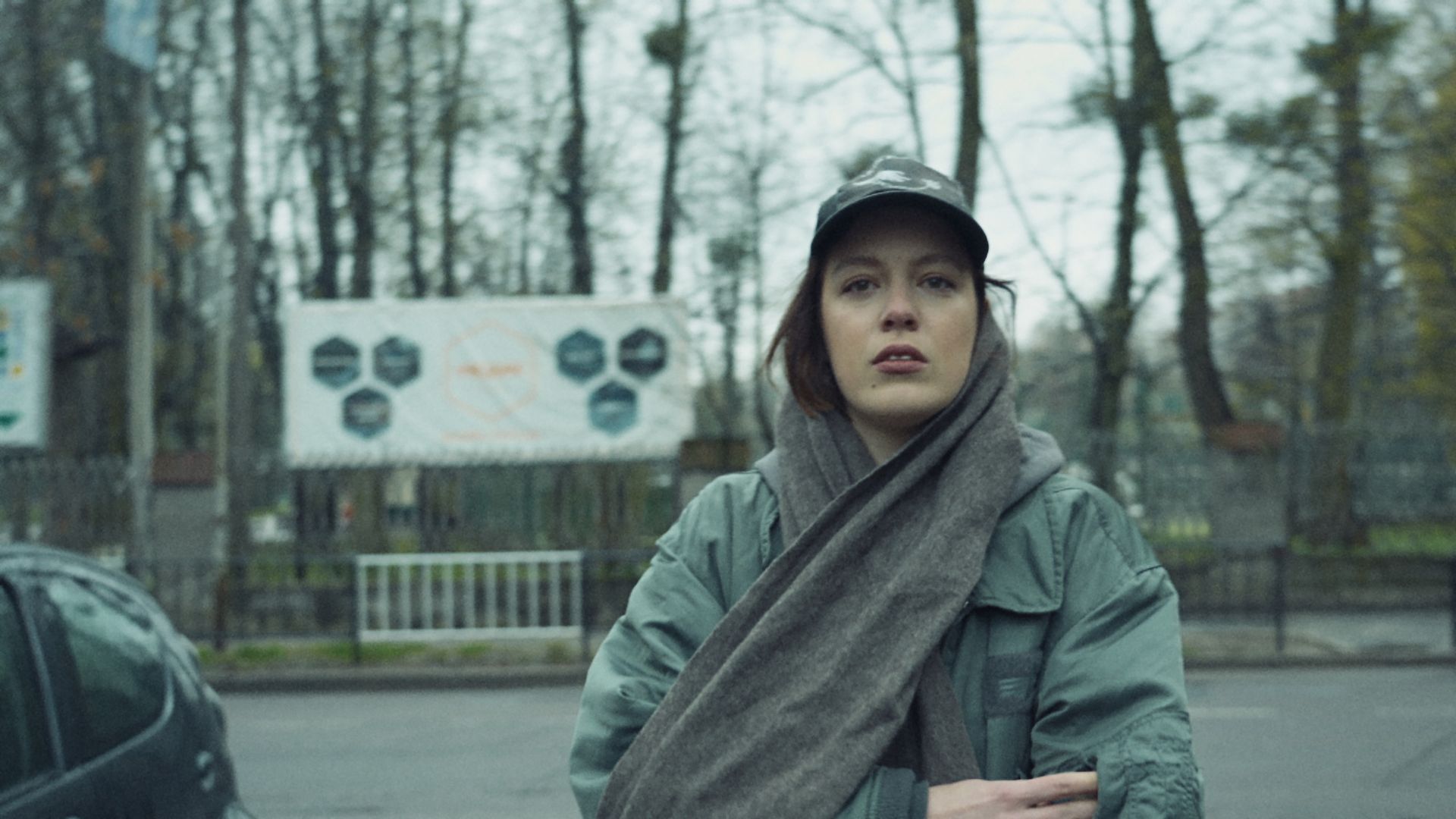Rule of Two Walls, directed by David Gutnik and showing at the Tribeca Film Festival in New York, follows artists of all kinds in Ukraine in 2022. The title repeats advice on the safest place to be during a bombing, between two walls. The film is a jumble of visits with artists who have been there.
The art landscapes here are as vulnerable, if not yet as damaged, as the general war-torn landscape of Ukraine. We get a chilling aerial view of the Donetsk Regional Drama Theatre in Mariupol, as we hear from an actress, now relocated, who speaks of carrying on her work in spite of the neoclassical building’s destruction in April last year that killed some 300 people who sheltered there. The structure’s façade is still recognisable, unlike the buildings within view around it.
A drone—in an improbable twist, given how drones have damaged Russian targets—passes through empty museum galleries at the National Museum in Kyiv. An occasional sculpture seems stuck in a corner, possibly awaiting transport. The works of art that remain are packed up. Many Ukrainian artists have packed off, a fact that the media don’t report much these days. The artists remaining in Ukraine whom Gutnik interviews constantly remind him that they chose to stay, out of a commitment to preserving and rebuilding a Ukrainian culture under attack.
The artists in Rule of Two Walls are the infantry, the grunts in that cultural war. Grunt may be the right word, although scream is better when it comes to a Ukrainian rapper, Stepan Burban, whom young people gather to hear. With art collectors and many artists abroad, materials are scarce and the works of art being made under war conditions might as well be called experiments.
One of Gutnik’s guides is Lyana Mitsko, director of the Lviv Municipal Art Center, a place where artists in western Ukraine gather to depict the war. “Our exhibition spaces are places where people can shelter during air raids,” she says. Many like her have family who can’t be relocated out of the country.

Lyana Mytsko, as seen in Rule of Two Walls, directed by David Gutnik. Courtesy of New City/Old City.
Gutnik’s film is a hodge-podge that shifts from person to person, from vibrant cities like Lviv and Kyiv to ruined towns, from smiling children to burning buildings to unearthed dead bodies. If it seems to lack a centre at times, that is to be expected. These artists are working on the fly, often with found materials, sometimes with surprising results. Yet at the film’s core is a commitment to a culture and a language that its subjects say the Soviets (that is, Russians) suppressed for decades.
If there is a musical score in real time, besides the war raps from Stepan Burban, it is percussive gunfire and air raid alarms. Russian bombs seem to work indiscriminately, sometimes ravaging blocks of Soviet-era buildings that Russified Ukraine. On a smaller scale, artists show how Ukrainian details in interior murals were covered with layers of whitewash in Soviet times. We watch as restorers scrape that paint away by hand, revealing colourful patterns. Those rediscovered treasures still risk being shelled.
Other artists, not identified, are shown producing works in progress. One anonymous woman paints scenes of women pierced with nails or awaiting sexual attacks and another of a woman painting in blood. She mulls how to depict the death of children, all in eerie combinations of violent details and soft, warm colours. Another burly bearded man produces leather masks, studies in fright that might scare someone if there weren’t a real war raging outside.
Like so many documentaries filmed in Ukraine these days, “Rule of Two Walls” has the feel of a clutch of dispatches, packed with personal testimony, sometimes urgent, sometimes tender, intercut much of the time with corpses. Gutnik even includes photographs of previous generations of his own Ukrainian-born family. As the film samples the soft power of culture and its clear limits, no one doubts whose side he’s on.
- Rule of Two Walls screens on 16 June and 18 June at the Tribeca Film Festival


